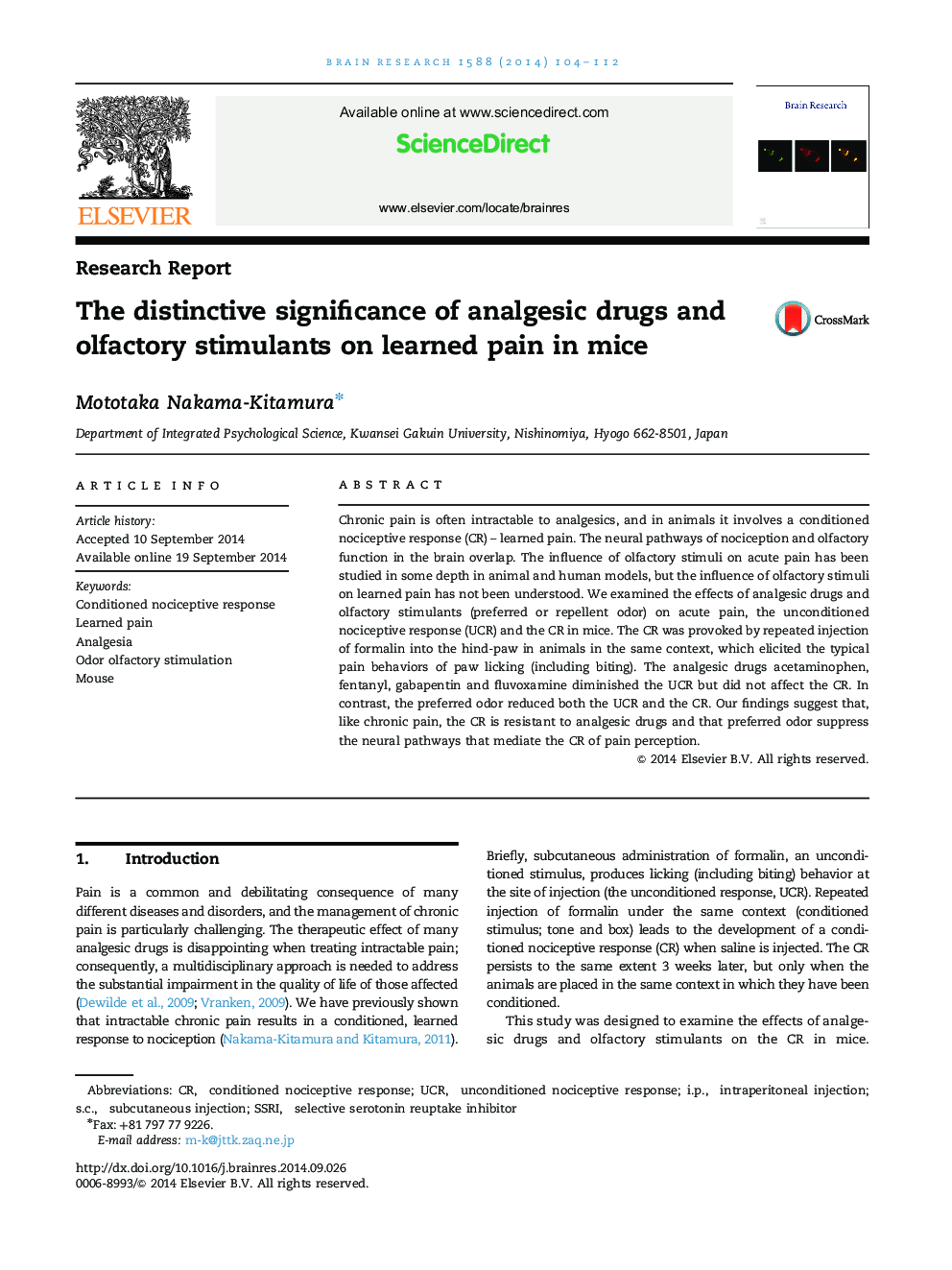| Article ID | Journal | Published Year | Pages | File Type |
|---|---|---|---|---|
| 4324076 | Brain Research | 2014 | 9 Pages |
•Chronic pain involves, the conditioned nociceptive response, a learned pain.•This leaned pain was intolerable to analgesic drugs acting on the spinal cord.•The learned pain was inhibited by olfactory stimulants.•Scopolamine did not affect the inhibition of the learned pain with sweet odor.•Sweet odor inhibits learned pain irrespective of the cognitive memory.
Chronic pain is often intractable to analgesics, and in animals it involves a conditioned nociceptive response (CR) – learned pain. The neural pathways of nociception and olfactory function in the brain overlap. The influence of olfactory stimuli on acute pain has been studied in some depth in animal and human models, but the influence of olfactory stimuli on learned pain has not been understood. We examined the effects of analgesic drugs and olfactory stimulants (preferred or repellent odor) on acute pain, the unconditioned nociceptive response (UCR) and the CR in mice. The CR was provoked by repeated injection of formalin into the hind-paw in animals in the same context, which elicited the typical pain behaviors of paw licking (including biting). The analgesic drugs acetaminophen, fentanyl, gabapentin and fluvoxamine diminished the UCR but did not affect the CR. In contrast, the preferred odor reduced both the UCR and the CR. Our findings suggest that, like chronic pain, the CR is resistant to analgesic drugs and that preferred odor suppress the neural pathways that mediate the CR of pain perception.
